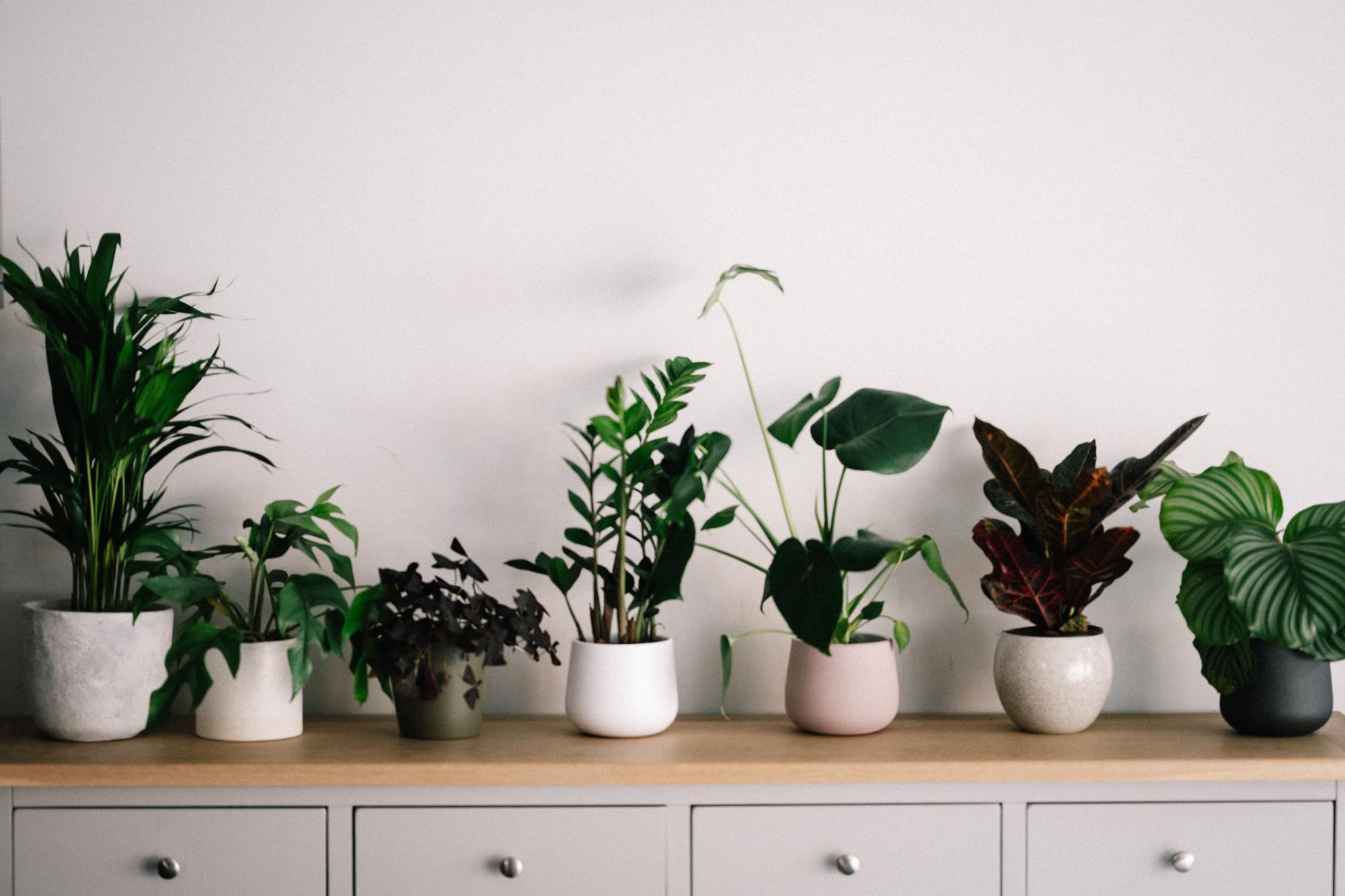Indoor gardening: which plants should you choose for your home?
Indoor plants add a green touch to your home and contribute to a healthier and more pleasant living environment. According to a study by NASA, certain plants can remove harmful toxins from the air, improving air quality. For example, the peace lily (Spathiphyllum spp.) was observed to remove toxins such as formaldehyde and benzene. Also, studies have shown that people surrounded by houseplants are less stressed, are more productive, and feel more comfortable. Last but not least, while some have concerns regarding having plants in the same areas they sleep, the truth is that the amounts of CO2 produced during plants’ respiration are meager and harmless to humans.
Choosing the Right Indoor Plants
To ensure that you will choose houseplants, it is essential to consider some crucial factors!
- For example, consider where you want to place your new plants.
- How bright is the room? Because there are plants with different light requirements.
- How much humidity is available? After all, some plants benefit from moisture, while others get diseases from it.
- How much time do you want to spend on your plants? As the needs differ for each plant.
- Will small children or pets have access to the room? Here you need to ensure that the plants you choose are not toxic to them.
Finally, depending on your style, there are many plants in different shapes, colors, and sizes, from which you can choose those that will create your desired aesthetic.
INDOOR PLANTS FOR YOUR LIVING ROOM
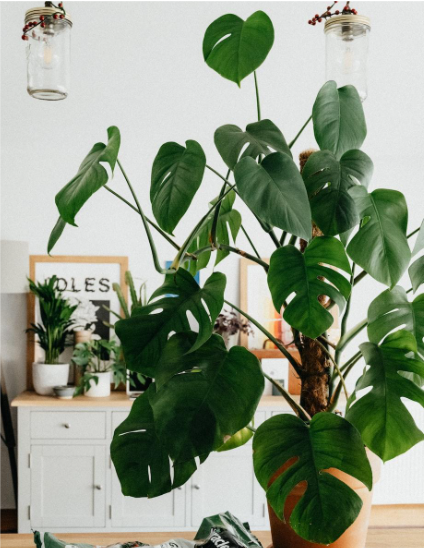
MONSTERA (Monstera deliciosa)
Maintenance: Easy
Lighting: It grows best in bright, indirect light.
Temperature: 18-29°C
Soil: Choose a good quality potting soil with peat moss that drains quickly. The plants will thrive in dense, nutrient-rich soil.
Fertilization: It needs fertilization at least once a month with a balanced houseplant fertilizer. But you should be careful because too much fertilizer can burn its foliage.
Watering: Usually, it needs watering once a week to once every two weeks.
Pruning: To encourage growth, prune in the spring and cut where you want the plant to grow. If you want it to grow taller, cut at the top.
Toxicity: It contains calcium oxalate crystals that can immediately irritate the mouth and throat when chewed or swallowed. These crystals can also irritate the skin.
PEACE LILY PLANT (Spathiphyllum sp.)
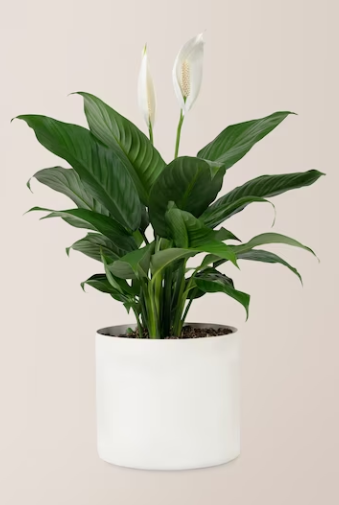 Maintenance: Easy
Maintenance: Easy
Lighting: It grows best in bright, indirect sunlight but can tolerate low light conditions.
Temperature: 18-24°C
Soil: Use a light potting mix with perlite or pumice. You could also add a small amount of compost.
Fertilization: If you want to encourage growth, fertilize every 1,5 months or so with a balanced houseplant fertilizer starting in late winter.
Watering: Usually, it needs watering once a week, depending on the conditions of your home and the type of soil your plant is growing in.
Pruning: If your plant has healthy green foliage and stems, you don’t need to prune it. Therefore, if you see yellow, crispy, or dead leaves, remove them by cutting them gently.
Toxicity: Yes, because its flowers, leaves, and stems contain tiny, insoluble calcium oxalate crystals that can immediately irritate the mouth and throat when chewed or swallowed.
KENTIA PALM (Howea forsteriana)
 Maintenance: Easy
Maintenance: Easy
Lighting: It grows best in bright, indirect sunlight but can tolerate low light conditions.
Temperature: 16-29°C
Soil: Use a light potting mix with perlite or pumice. You could also add a small amount of compost.
Fertilization: If you want to encourage growth, fertilize every 1,5 months or so with a balanced houseplant fertilizer starting in late winter.
Watering: It prefers lightly moist soil but doesn’t tolerate overwatering. Plan to water when the top inch of soil dries out, usually once a week, and reduce the frequency in autumn and winter. Occasionally you should spray with water the foliage to increase the humidity.
Pruning: It is not necessary, but it will help if you remove any brown leaf tips or dead leaves.
Toxicity: No
INDOOR PLANTS FOR YOUR BEDROOM
The bedroom is a particular area of the house because this is where you relax and sleep. Therefore, the air in this room must be refreshed, creating a sense of relaxation and tranquility. Several plants will do this job for you, including the following.
SNAKE PLANT (Sansevieria, Mother-In-Law’s tongue, S.trifasciata)
 Maintenance: Very easy
Maintenance: Very easy
Lighting: It grows in a wide range of light, from low to full.
Temperature: 18-29°C
Soil: Soil suitable for cacti and succulents.
Fertilization: Add a green plant fertilizer every two months during the growing season (spring-summer).
Watering: Depending on the conditions, it needs sparse watering every 20-30 days. Allow the soil to dry out before watering, and ensure it drains well afterward. Excessive moisture in the substrate can cause the roots to rot.
Pruning: No need
Toxicity: Because of the presence of saponins, all parts of the snake plant (also known as mother-in-law’s tongue or Saint George’s sword) are toxic. Saponins can cause gastrointestinal discomfort, nausea, vomiting, and diarrhea in both humans and pets, though the symptoms in humans are much milder.
GOLDEN POTHOS (Epipremnum aureum, Devil’s ivy)
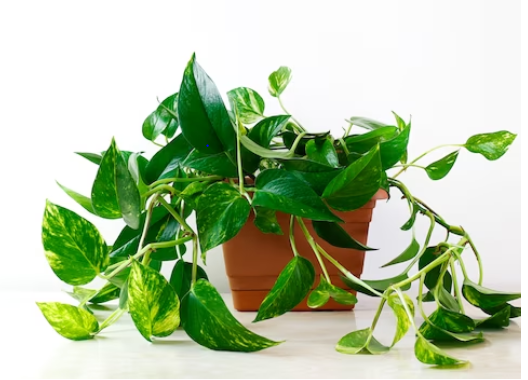 Maintenance: Easy
Maintenance: Easy
Lighting: It thrives in bright, indirect light but can tolerate medium to low indirect light.
Temperature: 18-30°C
Soil: Soil suitable for houseplants.
Fertilization: Add a green plant fertilizer every 15 days during the growing season and once a month during the winter.
Watering: Every 1-2 weeks. Be careful to allow the soil to dry out between waterings.
Pruning: You can cut the tops to create a more compact plant.
Toxicity: Yes, because its parts contain needle-like calcium oxalate crystals, which can cause immediate pain or a burning sensation and swelling of the lips, mouth, tongue, and throat if chewed or eaten. The sap may also cause contact dermatitis and eye irritation.
SPIDER PLANT (Chlorophytum comosum)
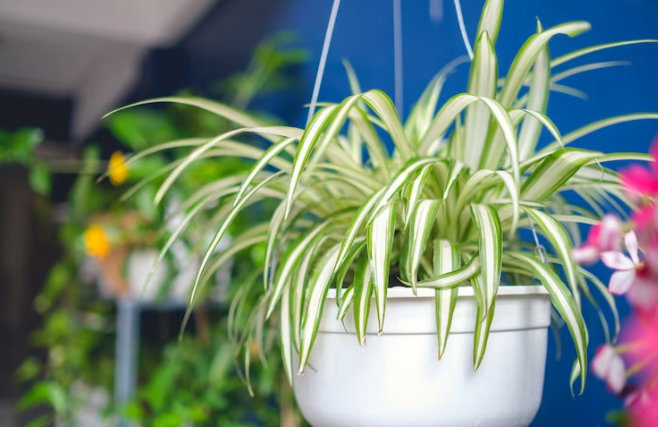
Maintenance: Very easy
Lighting: It grows best in sunny spots.
Temperature: 16-27°C (it can tolerate 7°C)
Soil: Well-draining potting mix.
Fertilization: Add liquid fertilizer for green plants every two weeks in the spring and autumn.
Watering: Every 4-5 days, especially during the summer season. Be careful not to overwater to avoid rotting. To create a moist environment, you can spray the leaves with water during high temperatures.
Pruning: You can regularly remove any damaged leaves.
Toxicity: No
PLANTS FOR YOUR BATHROOM
CHINESE MONEY PLANT (Pilea Peperomioides)
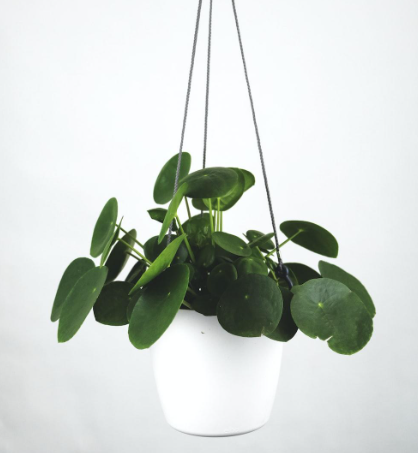 Maintenance: Easy
Maintenance: Easy
Lighting: It grows best in a good level of indirect sunlight. Be careful not to leave it directly exposed to sunlight in the summer.
Temperature: 13-30°C
Soil: Well-draining, moist, houseplant soil.
Fertilization: Add a liquid houseplant fertilizer once a month, only when it is in a state of active growth (spring-summer).
Watering: Water it once weekly, but check that the soil is dry before watering.
Pruning: Remove regularly any dry or yellow leaves.
Toxicity: No
PHALAENOPSIS ORCHID (Moth Orchid)
 Maintenance: Easy
Maintenance: Easy
Lighting: It grows best in a good level of indirect sunlight. Be careful not to leave it directly exposed to sunlight in the summer.
Temperature: 15-29°C
Soil: Well-draining, moist, houseplant soil.
Fertilization: Add a 20-20-20 fertilizer every one to two weeks in the summer and every three to monthly during the winter. It’s best to apply fertilizer when the orchid’s potting is already moist.
Watering: Generally, it usually requires watering about once a week. However, it’s essential to adjust the frequency based on the specific conditions in your home conditions. It’s best to soak the orchid’s medium and allow excess water to drain away. Avoid leaving the orchid sitting in a stater, as it can lead to root rot.
Pruning: Cut your flower spike halfway down the stem when the last flower drops. Remove regularly any dead leaves.
Toxicity: No
TILLANDSIA BULBOSA (Bulbous Air Plant)
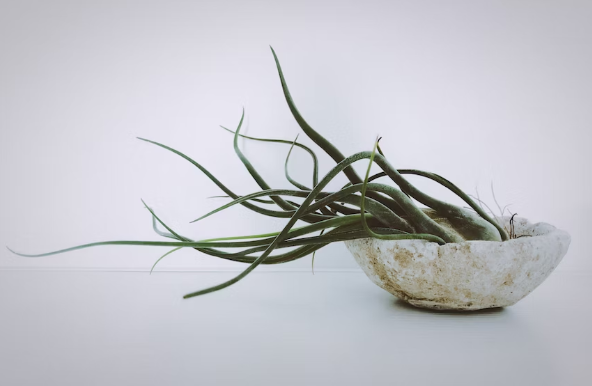
Maintenance: Easy
Lighting grows best in bright, indirect light or part shade spots.
Temperature: Be careful not to let the temperature drop below 12 °C.
Soil: None
Fertilization: It is not necessary.
Watering: Air plants growing in steamy bathrooms absorb moisture from the air in this way. However, it needs two or three light mistings every week with a spray bottle. Also, you can bathe it from time to time.
Pruning: In the spring, remove old leaves.
Toxicity: No
Literature:
- Antonidaki-Giatromanolaki, A. (2012). Pot plants for indoor use: Commercial production, use, and conservation. Crete, Giatromanolaki A.
- Davidson, W. (2009). Indoor plants: A guide to the care and preservation of your plants. Thessaloniki, Maliaris Paideia.
- https://www.ncbi.nlm.nih.gov/pmc/articles/PMC4419447/
- https://www.eltafans.asia/indoor-plants-and-the-nasa-air-quality-study/
- https://en.wikipedia.org/wiki/NASA_Clean_Air_Study
- https://ntrs.nasa.gov/citations/19930073077
- https://greenplantsforgreenbuildings.org/wp-content/uploads/2014/09/Dela-Cruz-2014-review-on-phytoremediation-with-indoor-plants-2.pdf
- https://www.jstor.org/stable/3599428
- https://www.aos.org/
- https://monsteraplantresource.com/how-and-why-to-prune-your-monstera/
- https://stumpplants.com/journal/pruning-guide
- https://www.scribd.com/document/438255926/Indoor-Plants21-pdf
- https://pdfcoffee.com/practical-houseplant-book-pdf-free.html
- https://www.picturethisai.com/wiki/Sansevieria_trifasciata.html
- https://www.childrens.health.qld.gov.au/poisonous-plant-pothos-epipremnum/
- https://www.poison.org/articles/peace-lily-223
- https://monsteraplantresource.com/are-monsteras-toxic-to-dogs/


















